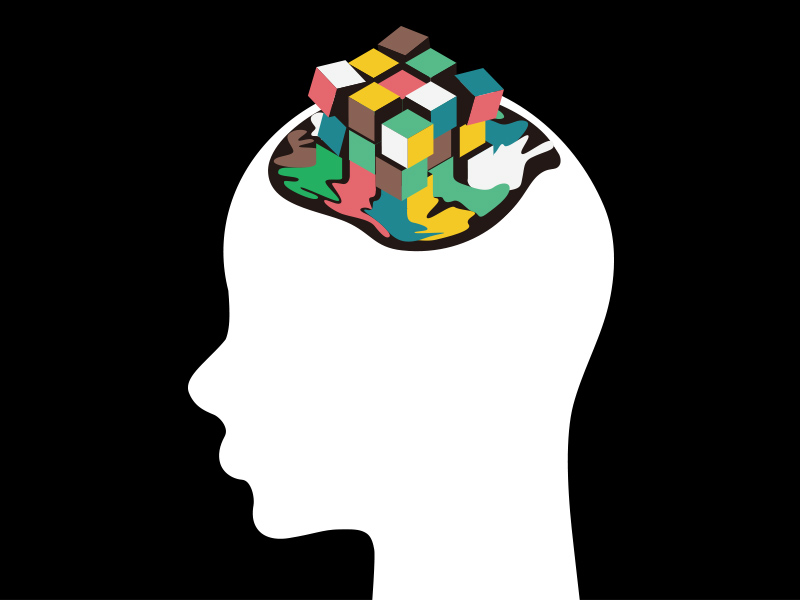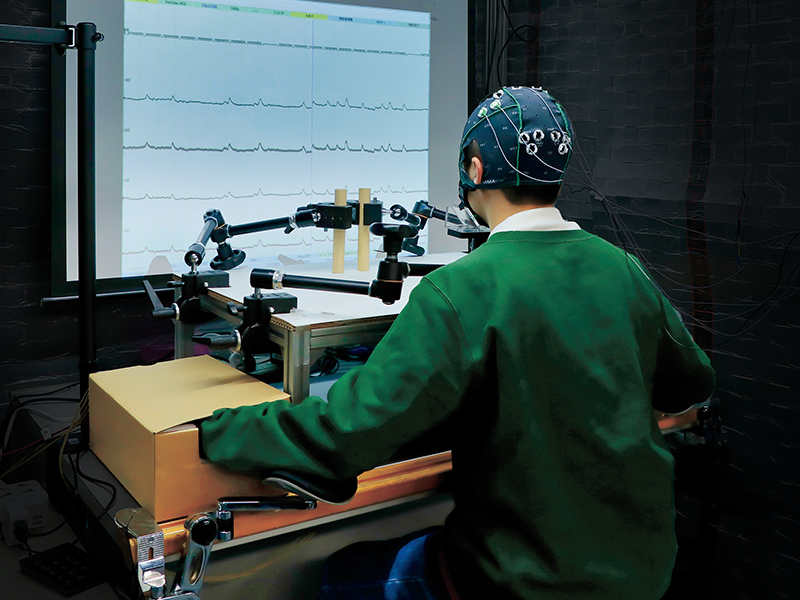STORY #2
The Innovation of Meaning:
Creating new Visions from within Oneself
Satoru Goto, Ph.D.
Associate Professor, College of Business Administration
How to utilize a design thinking
in an organization
Design Thinking has found its way around the business world in recent years. Many Japanese organizations have been trying to integrate this concept with their management systems. “However, it is not very easy for Japanese organizations to put design thinking to practice,” points out Satoru Goto. Goto is conducting theoretical research on design thinking and exploring methodologies that allow non-designers to utilize the creative process that excellent designers practice.
According to Goto, design thinking, as understood by the Japanese society, is a user-centric process that seeks to respond to users’ implicit needs, which are discovered through ethnography. However, it has been pointed out that such user-centric designs come from a place of hyper-focus on customers and tend to only provide solutions; such thinking hinders the creation of revolutionary innovations that birth new values. These critics today emphasize design thinking that brings about the ‘innovation of meaning. “This cognitive method is one that yields revolutionary innovations not through ethnography but from within designers themselves, where they find and create new meaning,” explains Goto.
Experienced and excellent designers can both create user-centric designs and generate ideas by relying on their intrinsic value and beliefs; their work is informed by their interpretation of issues, which they base upon the entirety of their accumulated experiences, across their careers and personal lives. The processes by which internal motives generate ideas are collectively called “inside out” and are said to be vital to the innovation of meaning.
“In B to B industry, where one interfaces with other organizations, traditionally, products that provide a solution to the client’s needs and challenges are sought after. Engineers in such organizations tend to rely on their expertise and on technological expertise to such an extent that they fall prey to cognitive bias. This tends to make it difficult for them to see with a broader perspective, which is vital to generating ideas from within,” says Goto. His perspective stems from his own experience of working as an engineer who developed products in a B to B organization. Over time, he has extracted himself from the narrow framework of relying on expertise and technology. Instead, he has constructed a theory to generate new vision from one’s intrinsic value systems and goals, and developed a practical model for the implementation of this theory. He has, in fact, applied his model to the development of new products as part of applied research on a domestic maker of interior parts for automobiles.
In this research project, Goto began by training the new product development members in knowledge relating to the humanities and social science. “The goal was for them to learn about social structures and the function of culture. For example, I brought in a Zen monk as a lecturer to talk about Buddhist thinking. Through such dialogues with specialists from various backgrounds, their perspectives could expand and their cognitive biases could loosen their grip. In such ways, I encouraged the members to acquire perspectives different from those they previously held,” Goto explains. As a result of this approach, he succeeded in shifting the perspectives of all the project members from “technocentric” to “humancentric.”
“Through this research, it became even clearer how much overly internalized organizational values and goals prevent the generation of ideas that could lead to the innovation of meaning,” Goto says. Such overidentification, where individuals within an organization overly identify themselves with the organization and internalize its values, is found in many Japanese organizations. “Japanese corporations tend to have a collectivist culture. With each employee sharing the organizational culture, these organizations have become monoliths exerting the tremendous capacities of their employees to grow and develop to this day. For example, in manufacturing, it was only possible to maintain a production line without compromising quality by using overidentification to its advantage. It was because of such Japanese-style management that Japan has been able to grow into a world-leading manufacturer of goods,” he explains.
In such organizations, he continues, the values and goals that the individuals carried that were distinct from the organizational values can be completely eradicated. In some cases, individuals willingly sacrifice their well-being and happiness. Overidentification becomes a great barrier to generating new ideas that could originate new values. “People have social identities beyond their role in an organization; they hold various social identities, such as being a member of a family or within the world of hobbies. Such diverse individual social identities are the source of inside out, and they are the keys to innovation. Inside out’s dependency on individuals is what brings about meaning.”
Bringing one’s various social identities to the forefront can provide contentment during the process of innovation and to one’s work and life, without distinction.
Goto’s vision goes beyond the individual and is turning towards organizations. “To realize revolutionary innovation in organizations, it is not only individuals who need to change; it is vital that the organization that utilizes those individuals transforms. So, going forward, I will be engaged in researching organizational identification,” Goto concludes.

- Satoru Goto, Ph.D.
- Associate Professor, College of Business Administration
- Specialties: Design, Business administration
- Research Themes: The management of the manifestation of identity in design thinking, modeling the innovation of meaning using structural theory.



























